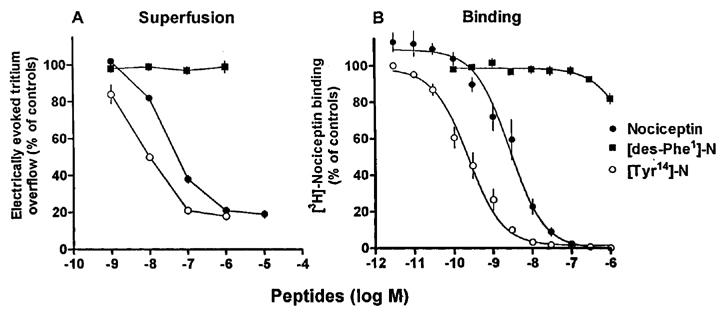Figure 2.

Effects of nociceptin, [Tyr14]-nociceptin ([Tyr14]-N) and [des-Phe1]-nociceptin ([des-Phe1]-N) on (A) the electrically evoked tritium overflow from superfused mouse brain cortex slices preincubated with [3H]-noradrenaline and (B) the specific [3H]-nociceptin binding to mouse brain cortex membranes. (A) The slices were superfused with medium containing desipramine 1 μM, rauwolscine 1 μM plus naloxone 10 μM throughout superfusion and nociceptin or one of the chemically related peptides from 62 min of superfusion onward. Tritium overflow was evoked by two 2-min periods of electrical stimulation (0.3 Hz, 50 mA, 2 ms), after 40 and 90 min of superfusion (S1, S2), and the ratio of the overflow evoked by S2 over that evoked by S1 was determined. (B) Membranes were incubated for 60 min with 0.5 nM [3H]-nociceptin and increasing concentrations of the competitor. The results, which represent means±s.e.m. of four superfusion experiments (A) and 4–6 binding experiments in triplicate (B), are given as per cent of controls (controls not shown); for some data points, s.e.m. is contained within the symbol.
